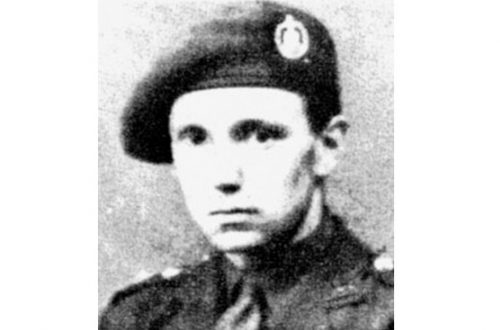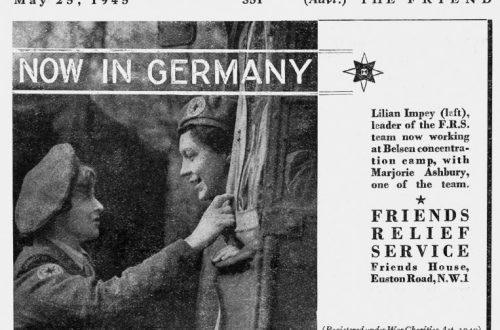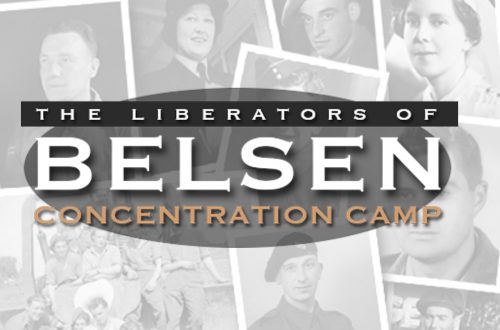Luba Tryszynska – The Angel of Belsen
Her own 3-year-old son had been torn from her arms and died in the gas chambers of Auschwitz. But on her second night in the Bergen-Belsen Nazi concentration camp, the woman who became known as the “Angel of Belsen” acted as any mother would when she heard children crying.
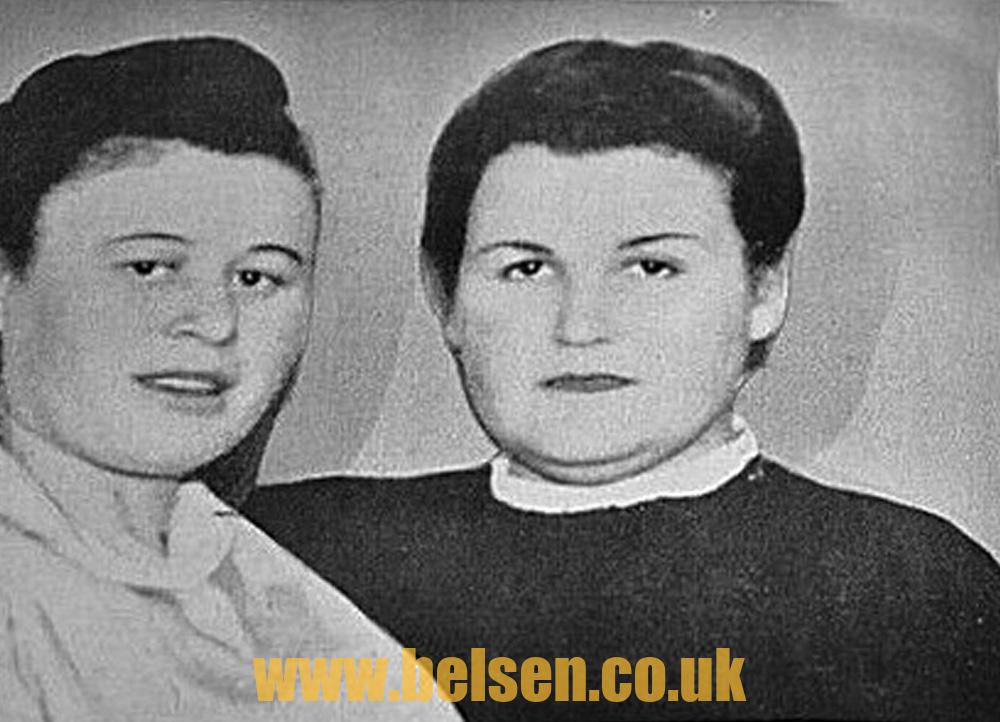
Saturday evening, many of those who survived the camp due to Luba Tryszynska’s efforts thanked her at an Amsterdam synagogue ceremony coinciding with the Jewish Passover holiday.
When Tryszynska opened the door of her barracks that night in the summer of 1944, the sight and sounds stunned her.
A dump truck was unloading into the mud a group of crying Dutch Jewish children, leaving them there to die.
“Those sounds I could never forget … their cries were bitter, they were unbearable,” said Tryszynska, now 74.
Tryszynska rounded up those 46 Dutch children, none older than 14. Thanks to her personal crusade to keep them alive, 44 survived until the camp in northern Germany was liberated by British troops on April 15, 1945.
On the 50th anniversary of Bergen-Belsen’s liberation, 31 of these children gathered in Amsterdam to honor Tryszynska. The city’s deputy mayor Saturday presented her with the Silver Medal of Honor for Humanitarian Deeds on behalf of Queen Beatrix.
“I gave them my love because I had lost my own child,” Tryszynska said after the presentation. “I always wondered why God let me live, why I was saved … it was to love these children.”
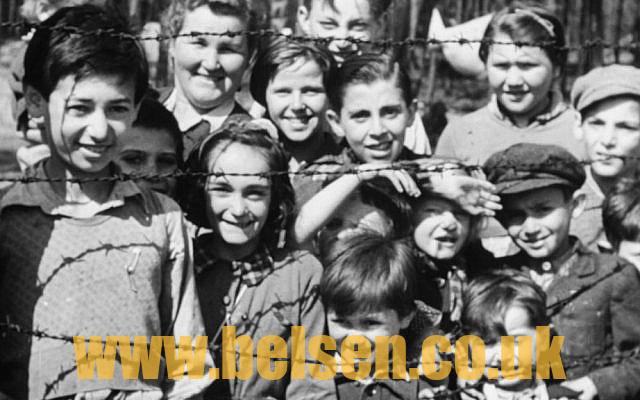
Luba (rear of photo)
One of these children was Jack Rodriguez, now 64, of Los Angeles.
“Nobody wanted to make the decision to go ahead to shoot us,” said Rodriguez. “Luba filled the vacuum, and had she not done that, they would have shot us if we started to become a nuisance.”
Tryszynska, a Polish Jew, was sent to the Auschwitz death camp in southern Poland in January 1943 with her husband Hersch and their 3-year-old-son Isaac.
At one of the infamous Auschwitz lineups, her son was torn from her and thrown on a truck bound for the gas chambers.
“I last saw him on that truck, he was crying and so was I,” she remembered.
Hersch was assigned to work as a carpenter at the gas chambers, but was later shot.
In the summer of 1944, she was moved to BergenBelsen. In the camp, she begged and scrounged for scraps of food to keep her Dutch children alive.
She kept them inside her barracks and quiet, hoping to make them as invisible as possible to the Nazi guards.
Inmates not only faced death at the hands of brutal guards, but from the cold, starvation and pestilence that thrived in the camp.
“We were all like animals,” recalled Tryszynska. “People were shaved bald, we were hungry.”
One of the young victims of Bergen-Belsen was Anne Frank, who arrived in the camp in October 1944 after her family’s Amsterdam hiding place was betrayed. Frank is believed to have died of typhus in March 1945, just a month before the camp’s liberation.
Tryszynska said she never encountered Frank at the camp, and only learned of her after the war.
But Tryszynska’s children somehow survived. She coaxed kitchen workers to give her extra food for the children, and stole what she could not beg.
She kept the children busy by assigning them different chores.
“We were busy from morning until night trying to survive,” remembered Rodriguez, who was then one of the oldest children at age 14. “We tried to look for water, wash and clean the other children. The rest of the time we were talking about food.
“I remember the most about the hunger and the lice that were under my skin.”
Then came liberation.
After the war, Tryszynska moved to Sweden, where she met her second husband, Saul Frederick, also an Auschwitz survivor. She had two children – a son and a daughter – from her second marriage. Tryszynska and her husband now live in Miami.
“I think the children gave me life,” Tryszynska said. “My own child was taken away and I had no feeling for life and I had no purpose. Then I found these children.”
April 16, 1995
The Spokesman – Washington
Toronto man recognizes himself in Bergen-Belsen photo
MORE:
Luba Tryszynska, a Jewish woman from White Russia, near Brest-Litovsk, probably Kaments-Litovsk, who lost her husband Hersch and three-year old child Isaac at Auschwitz, was transferred from Auschwitz in November 1944 to Bergen Belsen, and began caring for children with permission of the camp doctor and of SS officials in December 1944. Beginning with a group of Dutch Jewish children, the “diamond” children, whom she found outside her barrack one night, but not limited to these, she and Hermina Krantz, a Jewish woman from Slovakia, also transferred from Auschwitz, were placed in charge and cared for ninety orphaned children from less than one-year old to twelve years old.
Luba played the provider – she went all over the camp getting provisions, collecting, and winning help from some guards, who provided wood, bread, and occasionally milk. Hermina was the manager – she scrubbed the floors, washed the children, cooked and fed them. They were able to establish a regular routine, with meals at 7 am, 1pm, and 7 pm. Hermina boiled the children’s underclothes, seeking thereby to shut out the typhus that began ravaging the camp. Ultimately, nonetheless, about thirty of the children were infected.
There are indications that the women had help from friendly SS guards and even received provisions for the children from women SS guards. Right until liberation, Luba and Hermina kept the orphaned children’s hut intact and the children sheltered from the worst that occurred in the camp. After liberation, Luba became the manager of the new children’s home under British direction, and Hermina became the chief cook. Later, Luba accompanied children back to Holland and then other children to Sweden, before she herself came to the United States.
When she arrived in the United States and became an American citizen, it was noted that “the Angel of Belsen” had become a citizen. Found by some of the diamond children many years later, Luba was honored by the Queen of Holland and the mayor of Amsterdam. A recent children’s book by Michelle R. McCann about “Luba, The Angel of Belsen” has won numerous prizes, including a National Jewish Book Award.
In the Yizkor book for Kamenets-Litovsky, Belarus, a story about “the Angel of Belsen” states she was moved to Belsen in summer, 1944 and, as a nurse, she had some advantages. She concealed the small triangle beneath the identification number tattooed on her left arm, she passed herself off as a Russian, and she was placed in a nursing shack at the camp. There, one night, outside, she discovered the children of the diamond Jews of Holland, who had been separated from their parents and brought to Belsen. She pleaded the case with Dr. Klein, the doctor from Auschwitz. She’d keep them out of the way – Klein agreed to give her a barracks and put her in charge of the children. She had 94 children – Dutch Jews, Polish Jews, and Russians. The children were fed and kept indoors. When the British arrived, they were amazed to find 94 children alive in one barrack presided over by Luba Tryszynska (she was 28 years old). Later she accompanied 64 Dutch children home, and the other children to Sweden, who were in turn adopted in Sweden and Finland. In Sweden, Luba Tryszynska married Sol Frederich, whom she met in a DP camp. He had spent five years in Oswiecim, but she did not know him there. He had relatives in the United States. They immigrated.
15,230 total views

